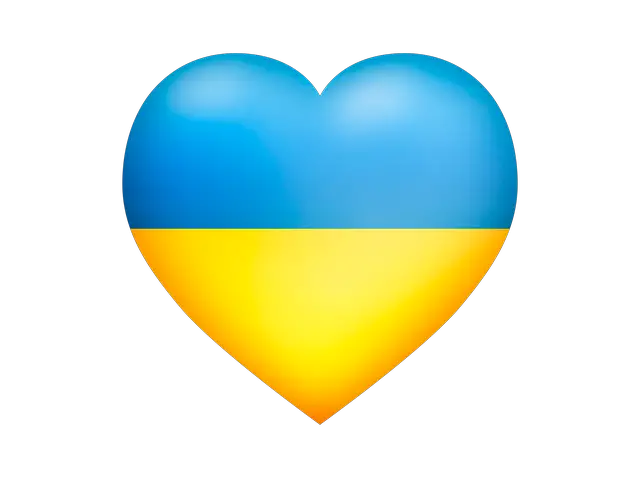The Ukrainian language is one of the most widespread Slavic languages in the world, second only to Russian. Ranked by the number of native speakers, Ukrainian is the 26th most spoken language in the world. It is native to around 40 million people, additionally, it’s the second language for another 15 million. You’ll find it mostly spoken in Ukraine, Russia, Moldova, Belarus, Romania, Poland, Slovakia, Kazakhstan, Canada, USA, and Brazil. Modern Ukrainian, according to the dictionary of the National Academy of Sciences of Ukraine, has around 256,000 words and it is included in the list of languages that are successfully developing. The language even has its own holiday – November 9, which is “The Day of Ukrainian writing and language” in Ukraine.
Below, you’ll find 7 more interesting facts about this beautiful language.
Also read: 25 great Ukrainian proverbs, sayings and idioms – and their meanings
Table of Contents
1. Two kinds of “Г”
The Ukrainian alphabet actually includes two versions of the letter “Г”.
One character corresponding to the “ordinary” Slavic “Г г”, stands for a guttural fricative sound between “Г” and “Х”, as in the words “говорити” or “гора”. A character in the form of a letter “Ґ ґ” is a voiced sonorous sound.
There are almost no original Ukrainian words with the letter “Ґ”, only onomatopoeias (for example, “ґaвa” – crow) and foreign borrowings (“ґанок” – porch, from German “Gang”). The letter is also used for the transmission of foreign own names with a voiced G: Ґете, Вінніпеґ. However, according to the current spelling rules using “Ґ” is optional and can be replaced by more common “Г”. This unique character appeared in Ukrainian alphabet only in the 1990s.
2. The most common letter in Ukrainian alphabet is “П”
The largest number of words begins with this character. There are even whole stories consisting of words beginning with letter only “П” – Приїздіть, пане Павле,- писав поважний правитель повіту Полікарп. The sentence that starts the story means Come visit us, Mr. Pavel, – wrote the respectable ruler of the county Polycarp.
The character “Ф” is the least used letter of the Ukrainian alphabet. In the majority of cases, words which begin with this letter came to Ukrainian from other languages.
3. Calling all gentlemen
Nouns in Ukrainian have seven cases. One of them is the vocative сase or, literally, “the calling case” – кличний. Historically, the “calling” form was an element of the Indo-European system of cases and existed in Latin, Sanskrit, and Ancient Greek. For example, the word “пан” (master, sir) has a vocative case, even in the plural – ” панове”, which corresponds to the appeal of “gentlemen”.
4. Ukrainian likes it cute and sweet
The language is immensely rich in diminutive forms – the way to make a word more cutesy and “small”. (Think “kitty” from “kitten” or “Timmy” from “Tim.) All personal names in addition to a neutral informal “short” name have also a rude-familiar or friendly and diminutive forms.
Perhaps surprisingly, even such categorically un-cute words like “enemies” have their diminutive forms. In this case, вороженьки. This word is present even in the national anthem of Ukraine – Згинуть наші вороженьки, як роса на сонці (Our enemies will vanish like a dew in the sun).
5. You can say it another way
Some claim that Ukrainian has over 5 million synonyms.
According to the publication “Brief Dictionary of Synonyms of the Ukrainian Language”, in which 4279 synonymous series were developed, the word “бити” (beat, hit, fight) has the most synonyms in the language – a total of 45.
If you want to, you’re free to try to learn all of them – бити, періщити, парити, шпарити, сікти, стьобати, хльостати, хвоїти, хворостити, маніжити, хвиськати, чесати, чустрити, чухрати, кулачити, стусувати, дубасити, духопелити, бухати, бухкотіти, гатити, гамселити, гателити, гилити, гніздити, голомшити, гріти, жарити, клепати, колошматити, кресати, лупити, лупцювати, локшити, лущити, молотити.
6. Surzhik – the mix of Russian and Ukrainian
“Surzhik” (суржик) refers to the non-normative speech of Ukrainians, which includes elements of the Russian language. These are primarily lexical and, to a lesser extent, morphological, while phonetics and grammar remain Ukrainian. Surzhik was formed in the rural population as a result of a mixture of Ukrainian dialects with Russian spoken language. Surzhik is common in Ukraine, as well as in the neighboring regions of Russia and also in Moldova.
According to the Kiev International Institute of Sociology, up to 18% of the total population of Ukraine communicate in this variant of the language. For instance – Шо ти щас робиш? instead of Що ти зараз робиш? or Як діла? instead of Як справи?.
7. Ukrainian isn’t only European
Outside of Europe, Ukrainian has a semi-official status in the United States, in Cook County, Illinois. In this district, there are about 5.5 million people, including the city of Chicago, together with the suburbs. According to the representatives of the county’s government, they had more than 27.000 uploads of information in Ukrainian. That became the reason why Ukrainian, along with 22 other languages, was chosen as one of the most used languages in the area.
—
This article was written by Nina Z – our Russian and Ukrainian teacher in Kiev. If your interest in learning Ukrainian is now spiked, you can sign up for lessons with her below. Alternatively, you can check out other interesting facts about Afrikaans, Norwegian, or Albanian.

